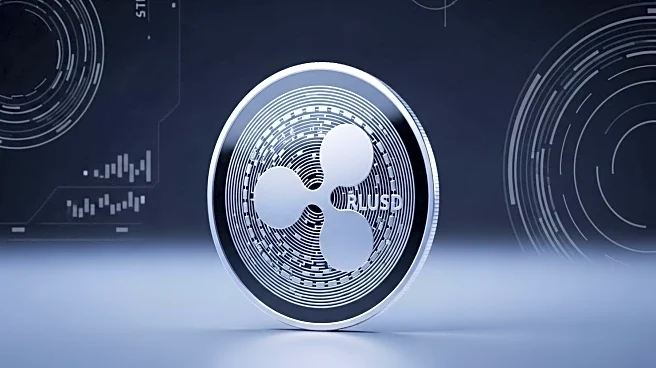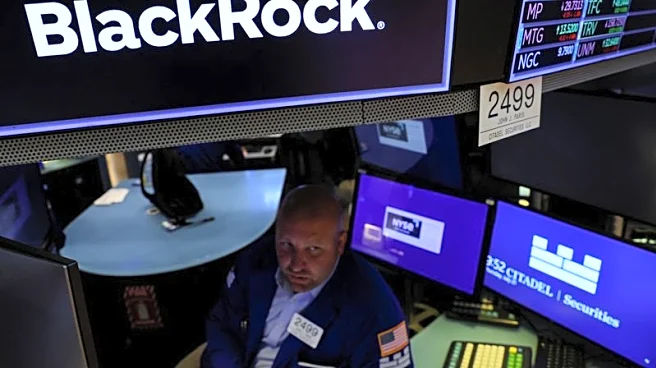What's Happening?
Financial institutions are increasingly adopting blockchain technology to tokenize real-world assets (RWAs), marking a significant shift in the financial landscape. This innovation is driven by secure blockchain platforms, which are redefining liquidity, transparency, and operational efficiency in asset management. The asset tokenization market reached $24 billion in 2025, fueled by regulatory clarity and institutional experimentation. Notable examples include J.P. Morgan's Onyx Digital Assets platform, which executed a blockchain-based collateral settlement with BlackRock and Barclays, reducing settlement times from days to minutes. Additionally, BlackRock's BUIDL fund, the largest tokenized treasury fund, holds over $2.9 billion in U.S. Treasuries, demonstrating the scalability of tokenized securities. Financial institutions are leveraging tokenization for real estate, commodities, and private credit, supported by custodians and regulated entities to ensure compliance with KYC/AML protocols while integrating with traditional financial systems.
Why It's Important?
The adoption of blockchain technology for asset tokenization is crucial as it offers enhanced liquidity, transparency, and operational efficiency, which are vital for modern financial systems. Tokenization allows for fractional ownership and 24/7 trading, lowering barriers for retail investors and increasing market accessibility. This shift is expected to attract both institutional and retail investors due to compelling returns, such as U.S. Treasury tokens yielding 4-5% and private credit tokens offering 8-10%. However, early adopters face high implementation costs and regulatory complexity, necessitating a balance between innovation and compliance. The strategic embrace of blockchain platforms positions financial institutions to lead the next era of financial innovation, potentially reshaping asset management and investment strategies.
What's Next?
Financial institutions are advised to initiate pilot programs with tokenized fund units or compliance reporting to build expertise in blockchain technology. Collaborations with cloud providers and DeFi platforms are recommended to enhance scalability. Institutions should also engage with regulatory bodies to advocate for frameworks that balance innovation with investor protection. As the blockchain infrastructure market is projected to grow significantly, institutions must act decisively to capitalize on these opportunities. Strategic investments in secure blockchain platforms are expected to drive future growth and innovation in the financial sector.
Beyond the Headlines
The move towards asset tokenization raises ethical and legal considerations, particularly in terms of regulatory compliance and investor protection. The U.S. GENIUS Act and EU's MiCAR provide clarity for tokenized assets, but institutions must navigate evolving frameworks like the CLARITY Act, which clarifies regulatory responsibilities between the SEC and CFTC. The integration of tokenized assets with DeFi platforms and secondary markets ensures liquidity but also requires robust security measures to prevent fraud and ensure transparency. Long-term shifts in financial infrastructure could lead to increased democratization of investment opportunities, potentially altering traditional financial hierarchies.












